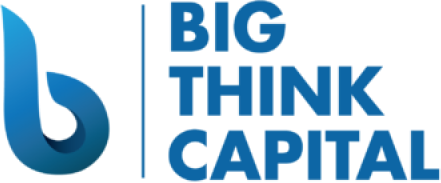Demystifying the Interplay of Fed Interest Rates and SBA Loans: A Comprehensive Guide for Small Business Owners
Estimated Reading Time: 6 minutes
- Understanding the role of the Federal Reserve in shaping interest rates
- The impact of Fed rate changes on SBA loans
- Strategies for small business financing amidst fluctuating interest rates
Table of Contents
- Understanding the Federal Reserve and Interest Rates
- How Fed Interest Rates Impact SBA Loans
- Current Trends and Predictions for Interest Rates
- Practical Insights for Small Business Owners
- The Role of Big Think Capital in Your Financing Journey
- Conclusion
- FAQ
Understanding the Federal Reserve and Interest Rates
The Federal Reserve, often referred to as the Fed, plays a crucial role in regulating the U.S. economy. One of its primary mechanisms for influencing economic activity is through interest rates. When the Fed adjusts the federal funds rate, it affects all other interest rates across the economy, including those for consumer loans, mortgages, and business financing.
Interest rates have far-reaching implications for small businesses. Higher rates can mean increased borrowing costs, while lower rates can stimulate spending and investment. In 2025, the Fed’s commitment to combating inflation is a significant focus, which guides its approach to interest rate changes. Business owners must stay informed about these adjustments to understand the broader economic environment and strategize their financing options accordingly.
How Fed Interest Rates Impact SBA Loans
SBA loans are popular among small business owners due to their favorable terms, such as lower down payments and longer repayment periods. However, the interest rates associated with these loans are not static. They are affected by the prevailing rates set by the Federal Reserve.
- Variable Interest Rates on SBA Loans: Many SBA loans, such as the SBA 7(a) and 504 loans, often come with variable interest rates. This means that when the Fed raises interest rates, the cost of borrowing can increase for businesses holding variable-rate loans. Conversely, when rates decrease, business owners can benefit from lower monthly payments.
- Rate Caps and Floors: It’s essential to understand any rate caps or floors outlined in your loan agreement. While variable rates can lead to increased costs in a rising interest rate environment, a cap ensures that the amount you pay never exceeds a certain level. This feature provides some protection against sharp rate hikes.
- Fixed-Rate Options: In case of uncertainty around future interest rate changes, business owners can consider fixed-rate SBA loans. Although initial rates might be higher than those of variable loans, they provide stability and predictability in budgeting for loan repayments over time.
Current Trends and Predictions for Interest Rates
As of early 2025, the Fed has been signaling a cautious approach regarding future interest rate hikes due to ongoing inflationary pressures. Recent reports suggest that the Federal Reserve has maintained a strategic stance focused on achieving inflation targets while supporting employment levels. Consequently, small businesses should be alert to the Fed’s announcements and economic indicators, as these will directly influence lending conditions.
- Key considerations for 2025: Look for signs of economic growth or slowdown, as these data points often precede Fed policy changes. Additionally, monitor labor market trends and consumer spending, as they can indicate the Fed’s approach to managing inflation.
Practical Insights for Small Business Owners
Navigating the relationship between Fed interest rates and SBA loans requires strategic planning and proactive decisions. Here are three actionable takeaways for business owners considering financing options:
- Assess Your Current Financing Needs: Take a comprehensive look at your existing debt obligations and cash flow forecast. With interest rates potentially rising, now is the time to evaluate whether refinancing or consolidating your loans could be advantageous.
- Explore Different SBA Loan Structures: Depending on your business’s needs and the current economic environment, consider both variable and fixed-rate SBA loans. Engage with a funding expert to gain insights into which option best fits your risk tolerance and financial goals.
- Prepare for Rate Changes: Stay informed about the Fed’s policy announcements and how they might influence interest rates. Having a plan in place for how to respond to potential rate hikes can keep your business financially agile.
The Role of Big Think Capital in Your Financing Journey
At Big Think Capital, we understand that the financial landscape for small businesses is complex and challenging. Our team of funding experts is dedicated to helping you navigate these complexities, ensuring you have access to the resources required to grow and thrive amidst fluctuating interest rates.
Our suite of services includes:
- Working capital advances
- SBA loans
- Equipment financing
- Merchant cash advances
- Lines of credit
By partnering with us, you gain valuable insights into funding trends and access to tailored financing solutions that align with your goals.
Conclusion
Understanding the interplay between Fed interest rates and SBA loans is essential for small business owners as we progress through 2025. By staying informed and adapting your financial strategies accordingly, you can position your business for success. Whether curating a solid plan to mitigate the impact of rising rates or exploring diverse financing options, knowledge is power.
If you have questions about how current interest rates could affect your financing options or if you need assistance in finding the right funding solution, we invite you to learn more about how Big Think Capital can support your business. Visit us at bigthinkcapital.com or speak with one of our knowledgeable funding experts today. Your journey towards achieving financial flexibility starts here.
FAQ
What are the differences between fixed-rate and variable-rate SBA loans?
Fixed-rate loans offer more predictability in payments, while variable-rate loans may fluctuate with market rates, potentially leading to both higher or lower costs over time.
How can I prepare for upcoming Fed rate changes?
Stay informed about economic indicators and the Fed’s announcements, reevaluate your financing needs, and consider discussing options with a financial expert.
Why are SBA loans beneficial for small business owners?
SBA loans typically offer favorable terms such as lower down payments, longer repayment periods, and competitive interest rates, making them a viable option for small businesses.






